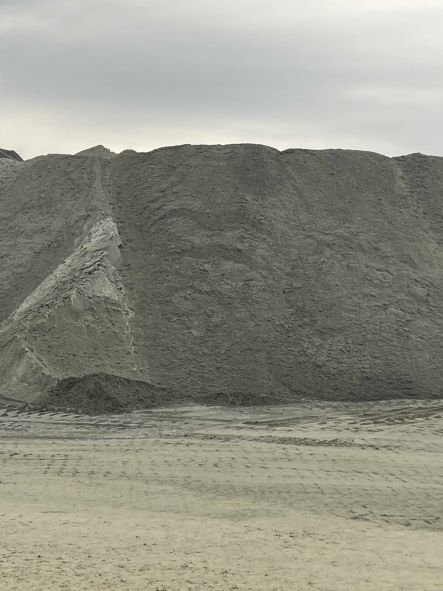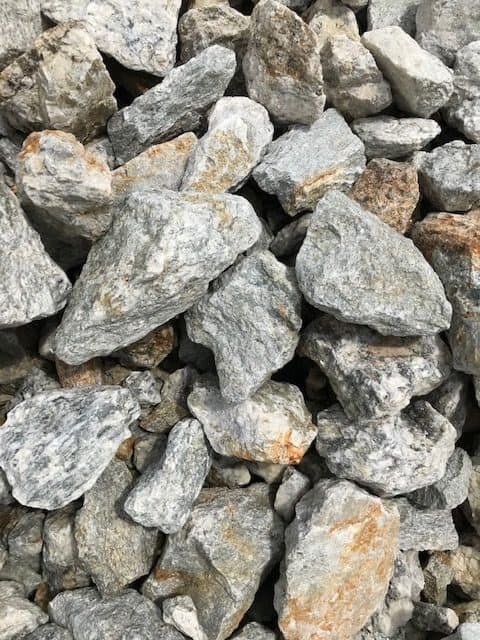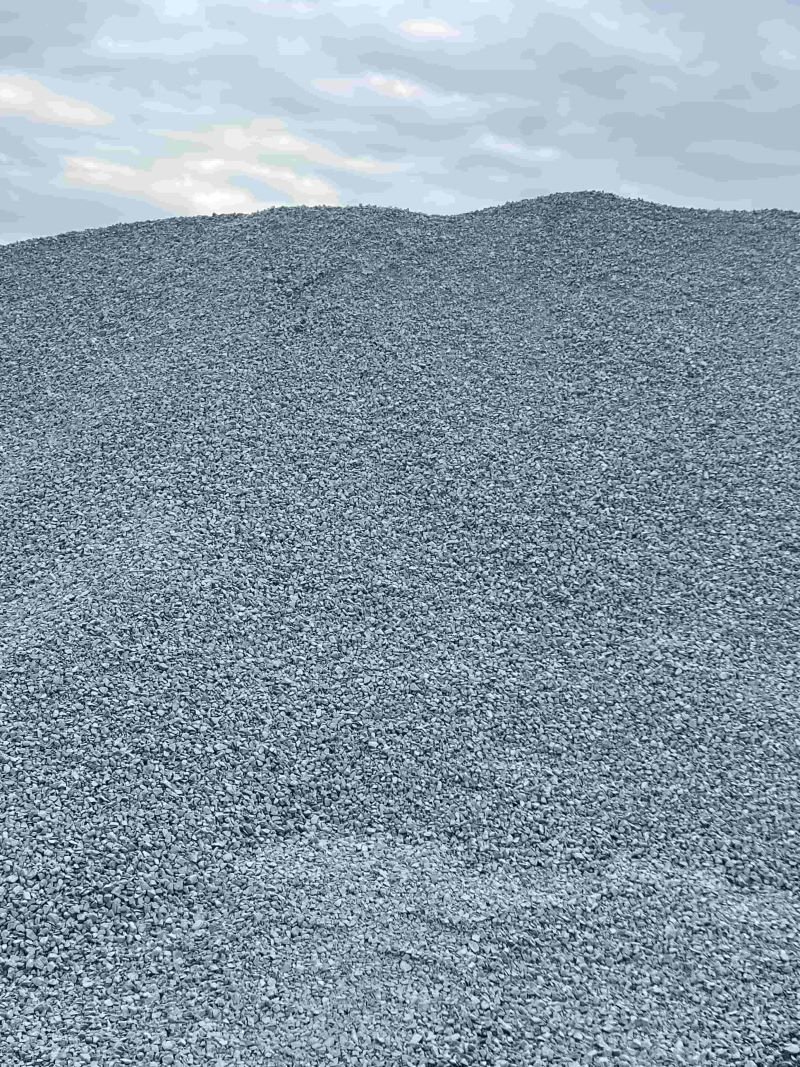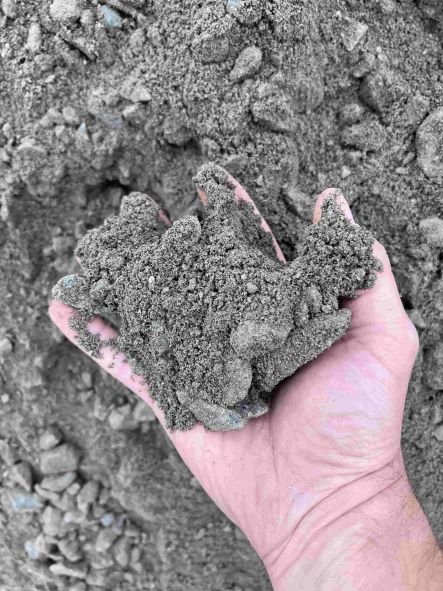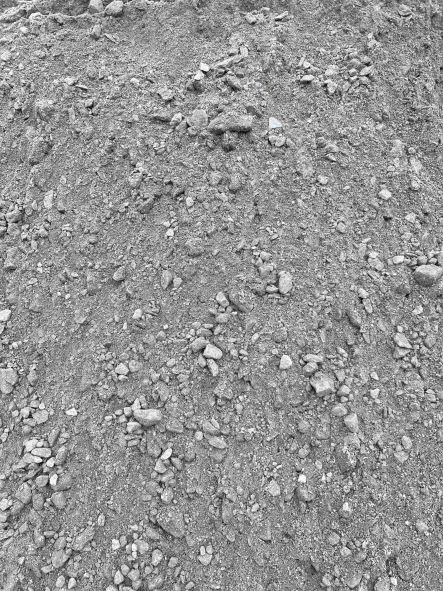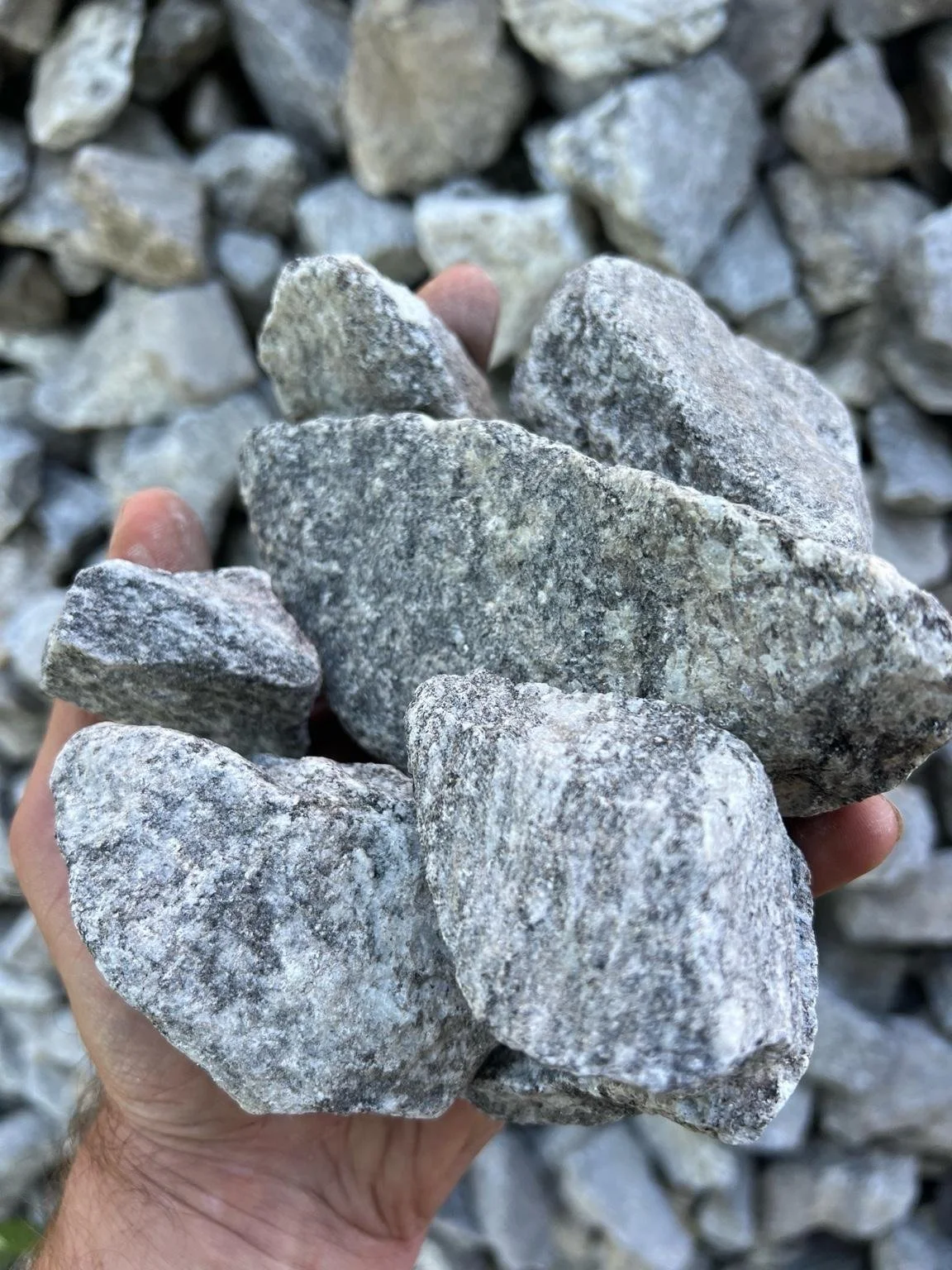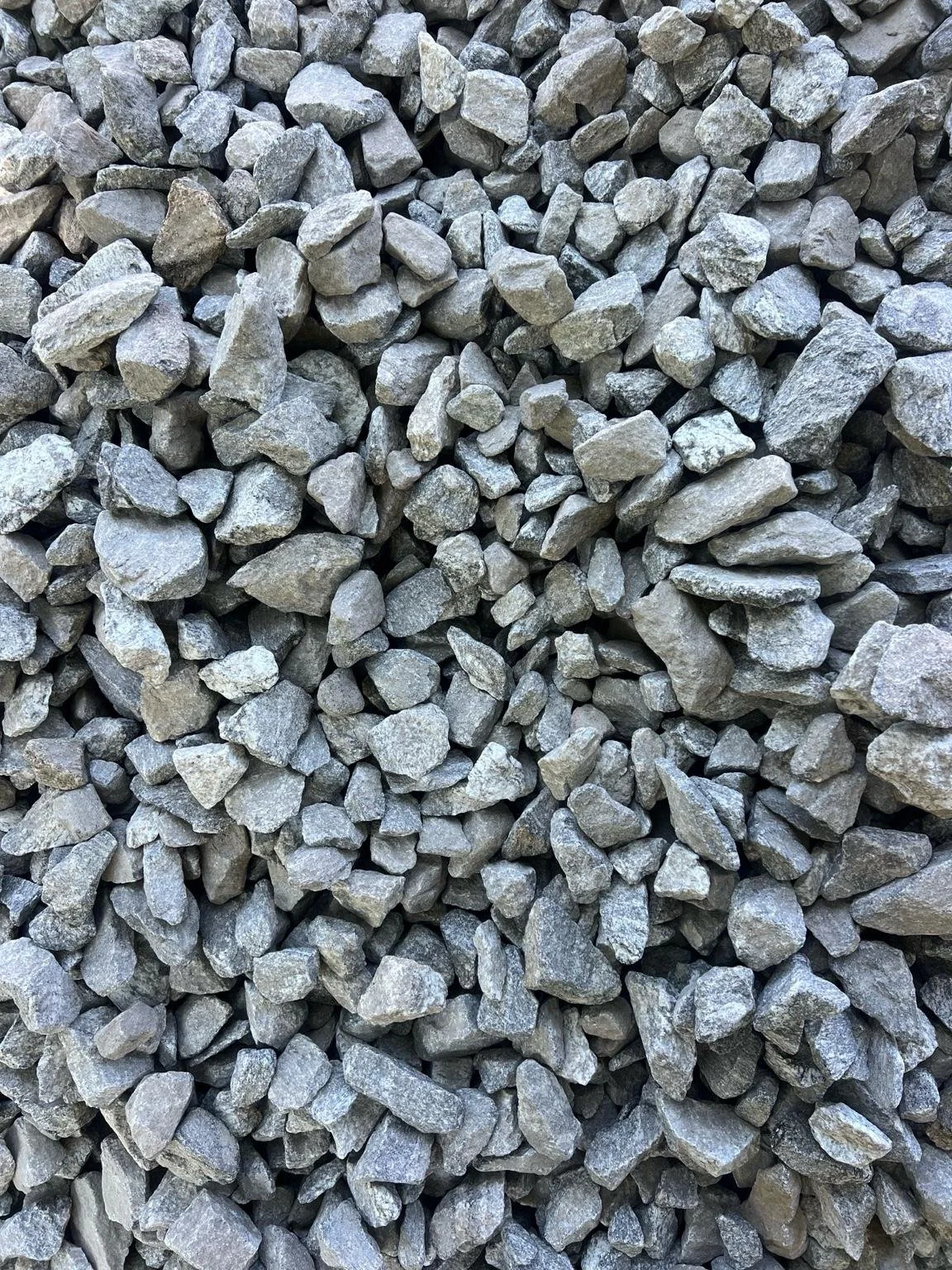How Much Screenings Do I Need?
Assumes Screenings ≈ 22 ft³ per ton. Coverage varies with moisture & compaction.
Sales tax (varies by county) is added at checkout.
About Screenings
Screenings, also known as granite dust or stone dust, are the smallest particles produced when larger crushed stone is processed at the quarry. These fines, typically under ¼″, include both angular fragments and rock dust.
Because of their angular shape, screenings lock together under compaction to create a hard, stable surface—ideal for paver bases, walkways, pipe bedding where voids must be eliminated, and leveling beneath pads or slabs.
Screenings are not suitable for drainage because the fines hold water. For drainage systems, #57 Stone or River Sand are preferred.
Local Applications
Paver Bases – Creates a smooth, interlocking surface beneath pavers.
Walkways & Paths – Provides a hard surface for foot traffic.
Pipe Bedding – Eliminates voids around pipes to prevent settling.
Leveling Pads – Used under sheds, slabs, or small structures.
Arenas (Blended Only) – Sometimes blended with sand or rubber to add firmness, but never used alone due to compaction risk.
Coverage and Density
Average Density: 22 cubic feet per ton
Coverage: ~100 sq ft/ton at 2″ depth
Coverage: ~65 sq ft/ton at 3″ depth after compaction
Note: Expect 15–20% reduction after compaction
Comparison to Other Materials
Crusher Run: Contains screenings plus larger stone; stronger for driveways and roads.
River Sand: Rounded particles, drains well, better for arenas or fill.
#57 Stone: Clean aggregate with no fines; ideal for drainage. Often paired with screenings as a base layer.
Concrete Sand: Washed, coarser sand designed for mixes. Screenings are finer and not used for concrete.
Local Performance in Upstate SC
Paver Bases: Frequently used beneath patios and walkways where compaction is critical in clay soils.
Clay Conditions: Often paired with fabric in Spartanburg and Greenville to prevent fines from mixing into the soil.
Contractor Guidance: Avoided in wet areas since screenings hold water and reduce drainage.
FAQ – Screenings (Granite Dust / Stone Dust) – Upstate South Carolina
What are Screenings?
Crushed granite fines smaller than ¼″, produced during quarry processing.
Are Screenings the same as Manufactured Sand?
Not exactly. Manufactured Sand is engineered and graded for concrete or asphalt mixes. Screenings are quarry byproducts; sometimes marketed as M10 granite sand.
What are Screenings used for?
Paver bases, walkways, leveling, pipe bedding, and blended arena footing.
Do Screenings compact well?
Yes. The angular fines interlock into a dense base.
Can Screenings be used for driveways?
Not as a surface. They retain water and get muddy. Use Crusher Run instead.
Can Screenings be used as a base for swimming pool liners?
No. Screenings compact very tightly and trap water, which can cause shifting, frost heave, and liner wrinkles. Their angular particles may also damage the liner over time. The industry standard is Mason Sand, which provides a smooth, cushioned, and drainable base.
What is the coverage per ton?
~100 sq ft at 2″ depth, ~65 sq ft at 3″ depth after compaction.
Do Screenings drain well?
No. They hold water. Use #57 Stone or River Sand for drainage.
Can Screenings be used in concrete?
Not typically. Concrete Sand (Washed River Sand) is preferred because its coarser particles allow bonding and drainage.
Are Screenings dusty?
Yes, especially when dry. Light watering or compaction reduces dust.
Can Screenings be used in horse arenas?
Not alone. They compact too tightly and can create unsafe footing. When mixed with sand or additives and maintained properly, they may be used as part of an arena system.
What’s the minimum delivery order?
1 ton, with free delivery on 15+ tons.
Can Screenings be tailgate spread?
Yes, though flow may be uneven.
Will weeds grow through Screenings?
Rarely, because of dense compaction.
Do Screenings replace sand under pavers?
Yes, they’re often superior to sand because they lock into place.
How are Screenings delivered?
Tri-axle dump trucks, up to ~22 tons per load.
Do I need fabric under Screenings?
Yes, especially in clay soils, to prevent mixing with subgrade.
Are Screenings the same as granite dust?
Yes, granite dust is a common name.
Are recycled Screenings available?
Sometimes, but virgin granite screenings are more consistent.
Can Screenings be used in landscaping beds?
Yes, but they compact more than decorative stone.
Are Screenings safe for pets?
Yes, they’re natural granite fines with no additives.
Do Screenings freeze in winter?
Yes, when wet. They harden while frozen but loosen again after thawing.
Is River Sand the same as Concrete Sand?
Often, yes. In many quarries, washed River Sand is sold as concrete sand because it meets concrete mix gradations.
Disclaimer
Natural products vary in size, color, and texture. Coverage estimates are approximate and may vary with compaction and moisture. See our Disclaimer & Terms of Delivery page for full details.


